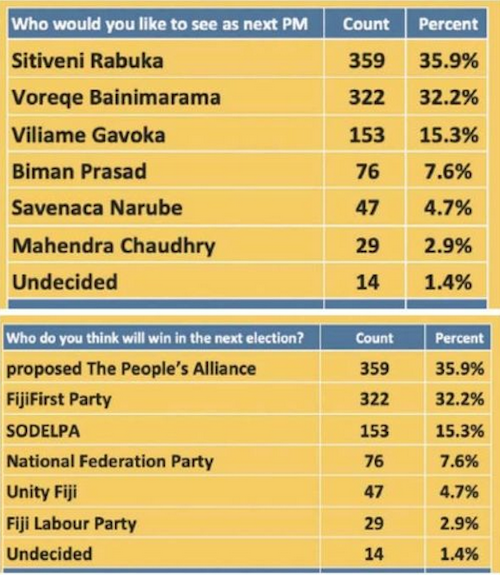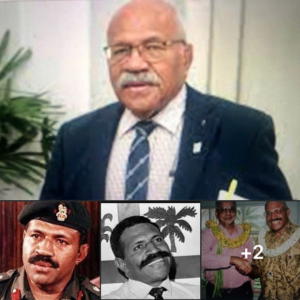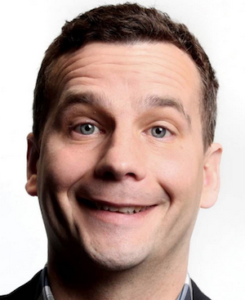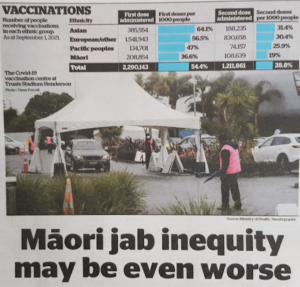“Does the White House think they have an Afghanistan problem or a COVID problem?”–“Chucky Doll” Todd question to Game Show Contestant-Panelists on NBC’s “Meet the Press,” September 5, 2021, seen on the Useful Idiots “Monday morning Sunday Morning News Shows” podcast review
Clearly, there are many officially unanswered “Meet-the-Pressing” questions viraling around these COVID-dark days, including whether the “Great Reset” signifies a revolutionary and “great game”-changing volleyball technique, like a drone-spike protein kind of move; or, in fact, the net-bisected surface of play more resembles a tennis court, as in the phrase: “Game, Great Re-Set, and Match.” Well, as of this writing, no FDA-approved word has come down from Swiss Alpine High on whether Klaus Schwab’s forehand or backhand is in better “form” these COVIDly-twilit days, but a greatly more un-resettling question du jour remains: Where is Kamala Harris, undoubtedly the most popular vice-president in the history of the United States of America?
Perhaps ironically, VP Harris was last seen in Vietnam while “America!” was awkwardly kerfuffling its way out of a Defense Industry gravy train in Afghanistan (Update: Harris also came out of hiding recently to stump for famous French Laundry-ist and could-have-been-recalled California governor and Getty fortune heir Gavin Newsom, but I digress, like an ornithological enthusiast that’s spotted a rarely seen bird — again!). Rumors swirl, like helicopter blades unsettling blood-caked dusts in countless “foreign” lands, that “Credit Card Country” Joe Biden’s heiress-apparent has been eye-witnessed drinking pinot grigios in Baghdad, Benghazi, Mogadishu, “on the road to Damascus,” Tel Aviv, Riyadh, Hong Kong, Xinjiang Province, etc. Other anonymous “Deep State” sources indicate, however, that the much-celebrated vice-president has been successfully relocated to an Antarctican safehouse, where all of the penguins have been fully “vaccinated,” and, “many times over!” Leakage of this hyper-classified “intel,” clandestinely known as the “Penguins in Peril!” dossier, has caused quite the stir at the Total Propaganda Network. In an indefatigable effort to combat “false narratives,” or “dis-to-misinformation,” the TPN has sand-blasted images all over Major Media Platforms of penguins dutifully queuing up–with eggs impeccably balanced on their “mighty Eskimo” feet — to receive their next “booster” of the constantly evolving “vaccine…”
On a mildly more serious note: Among other side effects, the rollout of the COVID-19 “variants” of the 9/11 Regime has accelerated the cognitive collapse of most Lefty-Liberal lobes of the American Mind into a brittle, authoritarian shrill-shell of its former Self. This “slo-motion” demolition project, or “shrinkage,” has been going on for decades.
Since the events of 9/11, certainly, but also easily traceable to the Clinton presidency, the core Liberal American Brain has been re-wired to embrace the National Security State, including all of its undeclared wars and other various shenanigansgterisms. Once upon a myth in America, there was this belief that the “conservatives” (also sometimes characterized as “isolationists”) were the “hawks,” or, truth be told, the “chicken-hawks,” to give all-due-cred to the Dick Cheneys and Donald Trumps of the world. This “belief” was perhaps a Doppler Effect illusion produced by the “Star Wars”-crazed Reagan-Bush-the-Elder regime of the 1980s, which managed most of the Brzezinski-Carter regime’s “dirty war” against Soviet Russians in Afghanistan, while double-down-dealing with Israelis and Iranians over Latin American cocaine-for-hostages-and-guns arrangements, culminating in the debut of the “Stealth War” strategy with the invasion of Panama — quite quietly, overnight — in December, 1989, but way more loudly over the Iraqi-occupied Kuwaitenland slightly more than one year later, in 1991. Indeed, the American Odysseus was all over the map during the 1980s, and the “pre-neo-cons” had softly earned their militaristic credentials by the war-mongering end of the 3-term Reagan-Bush presidency. But then, like a Trilaterally Commissioned miracle, Bill Clinton “took over,” and under this Rhodes Scholar from obscure Arkansas–the bombs never stopped falling…
So the neo-liberal-con job was already in full farce when another Bush, this time a rehabilitated “W,” won the 2000 quadrennial election by a singularly slender one Supreme Court vote; Al Gore might still demur, but the “inconvenient truth” was that the Third, or Judicial, branch of the Federal Government still counted (so to speak…). One 9/11 later, and we were back in Undeclared War-Landia, but this time with a vengeance, bombing the be-Jesus out of the “Allah-Mighty” Caliban-Taliban in far Off-ghanistan, like this unlikely neo-Bush president was a “Jack-in-the-Box” Prospero waving a magic wand — and the Corporate Media Press corps cheered, where formerly they had…jeered.
In fact, after the events of 9/11, the “Liberal” sentiment in America fell completely in line with a novel “War on Terror”-style of thinking, a “free-fall” that was unofficially coronated when all leading “Liberal” lights — Hillary Clinton, John Kerry, Joe Biden, et al…– absolutely proselytized for the WMD-lie like it was the “New Religion, and all Good Democrats should get them some!” The WMD propaganda campaign, of course, greased the “Shock and Awe!” track to the Constitutionally illegal invasion and subsequent occupation of Iraq. No honest American–Republican, Democrat, or Other–had bargained for that, but the “bill of sale” was final: the Liberals had sold out to the Pentagon, and knew they could always pivot the blame on a “Republican” when the “Grapes of Wrath” went sour…
Enquiring Minds Want to know: “But, Like, Are the Taliban Vaccinated or what?”
But what, indeed! There has been some breaking Big Media News on the fama volat wire, shocking to tell, to wit: “FOX News sales tool Pawn Hannity and MSNBC’s Russia-grating Rachel Madcow have apparently eloped to Afghanistan to join the Taliban in order to atone for shilling for American Empire these last decades. No confirmed word on their exact whereabouts, but grainy leaked video appears to show the two Corporate Media hacks having a Tea-for-Three in a Kabul cafe with Kamala Harris, the current VP-absconditus of Joe Biden’s Klaus Schwab-sponsored Imperium in the North American sector. Taliban spokes-transgenderpeoplepersons will neither confirm nor deny this story…”
Escape from Afghanistan has not proved the most successful Wash-Pentagon movie of all time (should have consulted John Carpenter…); in fact, it appears to have pissed off more than a few folks. No one, especially “Liberals,” questioned the motives at the time of “invasion,” yet managed to happily embrace the acrobatic accolades of a “Just War” kicked-off by a Junior Varsity Bush, which ultimately resulted in the miraculous election of Barack O’Bushma, our first ever Black-Irish-White-American president, who squared off in the main election against a Vietnam War prisoner of 5 years, John McCain, in 2008. Quite ironically, perhaps, McCain had been a bit pigeon-holed in the Keating-5 Savings-and-Loan scandal of 1987 just as O’Bomney himself would never take any real flak for his bailout of the Big Banks when he assumed Oval Office, in January 2009.
What were the odds? Throw a crazy “Trump” card into the mix a few years later and you have about what we are dealing with today. Biden’s the spitting image of a doddering Imperialist, except that he can no longer regularly access the spit in his own mouth. That’s a “mean thing” to write, but entirely true. “Joe Biden” is pretty far from the “way forward,” and Trump was used as the “Clown” on the way to this improbable — if not totally unpredictable — act of Ventilator-Stage Dying Capital. Klaus Schwab, for one, has a “plan,” and it involves, quite literally, “micro-chipping” your brain; he’s entirely “on record” as stating the same. Bill Gates and the British Royals — “Hello, America!” — are completely on-board with this patently defunct — and perverse — model of continuing the “Great White Western Imperial Shark Model” moving forward — but: It’s dead in the water, and the sooner we jettison it, the better.
That’s all a bit of editorializing on the way to a “happy ending,” but we are all being placed between the Scylla and Corona-bydis of modern western imperial, and cognitive, decline; scientifically, this condition is known as “entropy.” Choppy waters, indeed. The much-praised “AI” will not save us so much as enslave us, and that is the “plan” according to the Expert-Idiots who are issuing all of these insane “mandates,” like Humanity hasn’t survived a plague or two before. Of course, Humans have, but maybe We are a plague upon this Planet? That’s another question, this plague of humans; however, there is plenty of evidence that We can do something different than mis-engineer a screwed-up Dystopia, as if this were all a teleological nightmare, and “Hush, hush: No further questions, please…” Quite hopefully, but obviously ironically, I will put you out of the misery of reading this essay any further by quoting the last eloquent lines of the computer HAL in Stanley Kubrick’s groundbreaking political Space movie 2001: a Space Odyssey —
“Day-zee…Day-zee…”
The post COVID-2021: a Plague of Mandates Odyssey first appeared on Dissident Voice.This post was originally published on Dissident Voice.


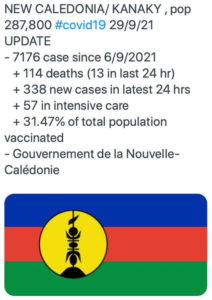



 ” snowballed into an unstoppable corporate/government momentum which shows no signs of letting up. All that propaganda, the deliberate lies about mask efficiency (they don’t work) and vaccine holiness (they don’t prevent transmission) they’ve been shoving down the public’s throats for over a year and a half? Yeah, the nanny-state politico-medical tyrants are not going to give up this narrative without a fight. They are doubling down on the fear and quest for total obedience and control. It suits late-stage capitalism just fine if small and medium sized businesses go under and the excess labor supply of the unemployed are evicted and go hungry. They are extraneous to the monopoly cartels which run the “economy”, which is run by giant tech corporations, the stock market, the military-industrial complex, and the FIRE sector, multinational conglomerates who operate with almost no competition in nearly every industry.
” snowballed into an unstoppable corporate/government momentum which shows no signs of letting up. All that propaganda, the deliberate lies about mask efficiency (they don’t work) and vaccine holiness (they don’t prevent transmission) they’ve been shoving down the public’s throats for over a year and a half? Yeah, the nanny-state politico-medical tyrants are not going to give up this narrative without a fight. They are doubling down on the fear and quest for total obedience and control. It suits late-stage capitalism just fine if small and medium sized businesses go under and the excess labor supply of the unemployed are evicted and go hungry. They are extraneous to the monopoly cartels which run the “economy”, which is run by giant tech corporations, the stock market, the military-industrial complex, and the FIRE sector, multinational conglomerates who operate with almost no competition in nearly every industry.

